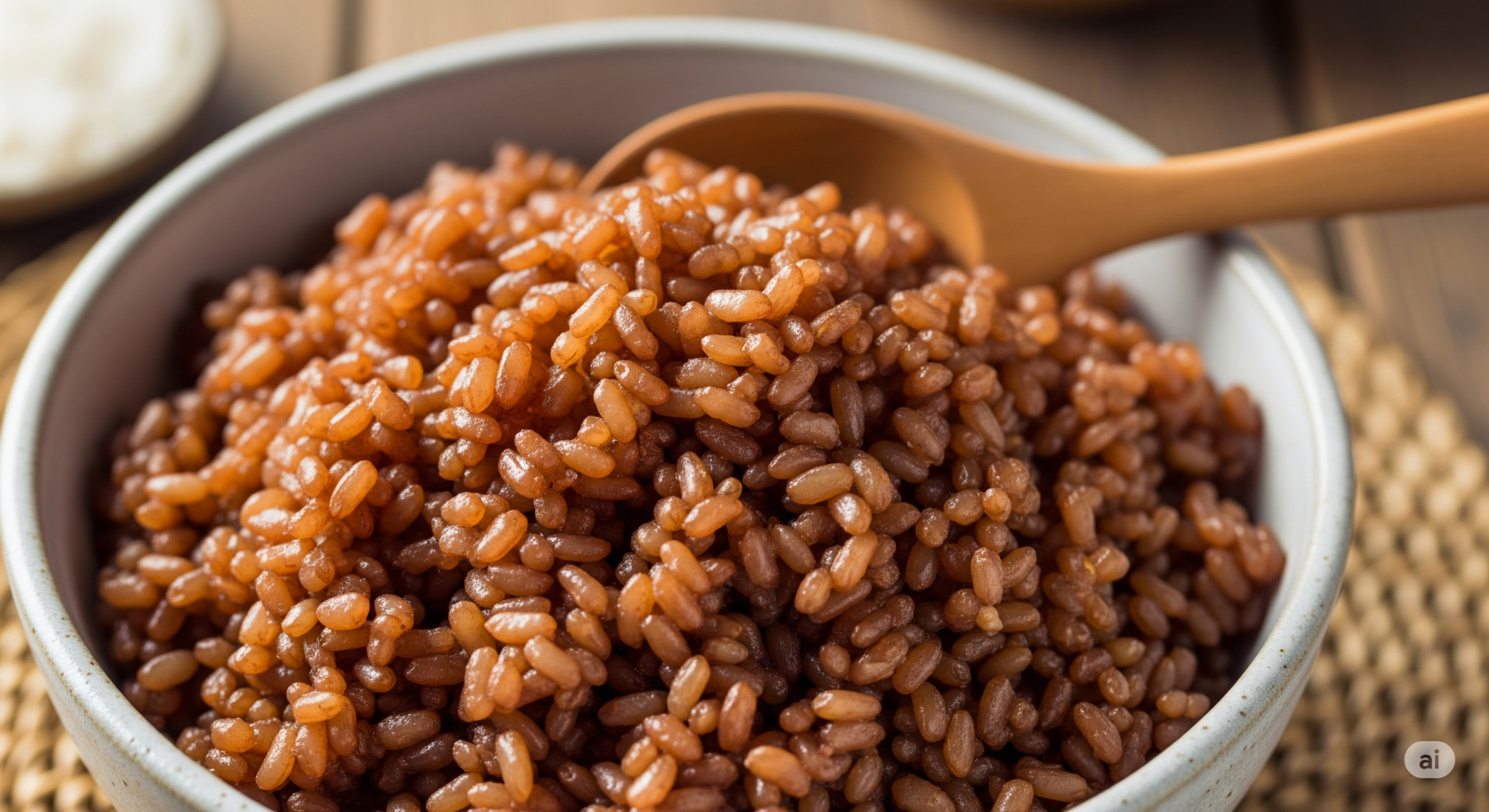1. The Difference Between Glutinous and Non-Glutinous Rice
The rice we eat is broadly divided into non-glutinous (regular) and glutinous rice. The biggest difference between them is the ratio of ‘amylose’ and ‘amylopectin,’ which make up the starch.
– Non-Glutinous Rice: A mix of amylose and amylopectin in about a 2:8 ratio. Amylose has a simpler, more linear structure, making it harder for digestive enzymes to access.
– Glutinous Rice: Its starch is almost 100% amylopectin. Amylopectin has a highly branched structure, like tree branches, which provides a very large surface area for digestive enzymes to attach to.
2. Digestion Speed and Glycemic Response
Because of this structural difference, glutinous rice, with its overwhelmingly high amylopectin content, is digested much faster and more easily than non-glutinous rice. This means it raises blood sugar faster and higher.
This principle applies to brown rice as well. Although the bran layer of brown rice slows the rise in blood sugar, ‘glutinous brown rice’ is stickier and softer than ‘non-glutinous brown rice (regular brown rice),’ but it has a higher glycemic index (GI).
3. The Choice for People with Diabetes
Therefore, people with diabetes should be cautious with foods made from glutinous rice, such as sweet rice cakes (injeolmi) or the rice in samgyetang (ginseng chicken soup). When cooking rice, it is more beneficial for blood sugar management to use regular brown rice or other mixed grains rather than adding glutinous rice or glutinous brown rice for stickiness. If you have digestive issues, using well-soaked regular brown rice or germinated brown rice is a better alternative than glutinous brown rice.
Summary: Even among brown rice, the sticky ‘glutinous’ variety can raise blood sugar faster and higher than regular ‘non-glutinous’ brown rice due to its fast-digesting amylopectin content, so caution is required.


Leave a Reply